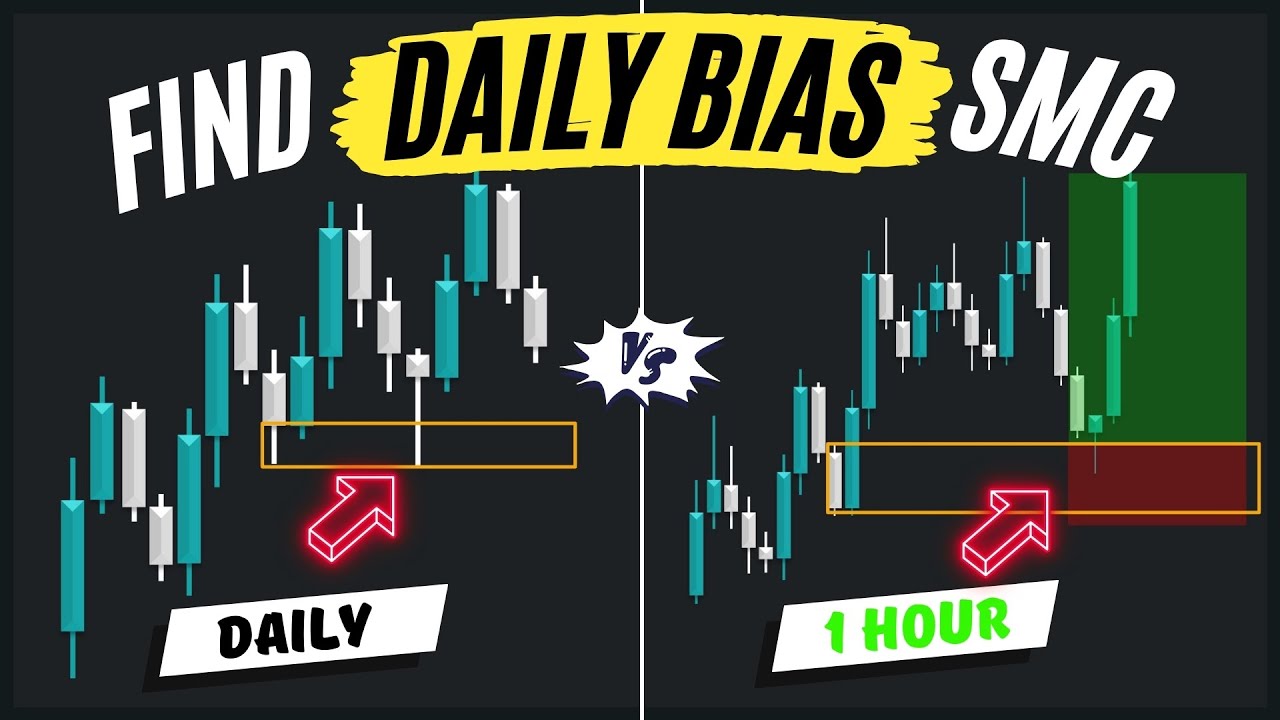ICT Daily Bias Ultimate Guide | The only video you need
Summary
TLDRThe video teaches traders how to utilize daily market bias for more successful trading. It emphasizes focusing on the prevailing market direction (bullish or bearish) rather than predicting reversals. Key concepts include identifying market structure, using fair value gaps, order blocks, and managing risk effectively. Traders are encouraged to follow clear trends, avoid overcomplicating analysis, and wait for optimal setups to maximize profits. The video also highlights the importance of disciplined risk management and staying in line with the market’s movement for consistent results.
Takeaways
- 😀 Align your trades with the market's daily bias to increase the chances of success.
- 😀 Identify the daily bias by observing the overall market structure and its recent movements.
- 😀 Follow a simple framework: Where are we now? What are we targeting next? Where will we go first?
- 😀 In a bullish market, focus on buying during pullbacks or after minor dips.
- 😀 In a bearish market, focus on selling after rallies or retests of key price levels.
- 😀 Don't anticipate market reversals too early, wait for clear confirmation before entering trades.
- 😀 Maximize profits when your trades are going in your favor, but always be cautious of market volatility.
- 😀 If your daily bias is incorrect, manage risk carefully and avoid emotional reactions.
- 😀 Focus on obvious trade setups that align with the market's structure, rather than overcomplicating your strategy.
- 😀 Ensure you have a clear target in mind for your trades (e.g., liquidity zones, fair value gaps, previous highs or lows).
- 😀 Risk management is essential – never let one wrong trade dictate your approach for the next one.
Q & A
What is the primary focus of the video?
-The video focuses on helping traders develop an effective approach to identifying and capitalizing on market structure, using clear steps to understand market direction and trends.
What is meant by 'daily bias' in the context of the video?
-'Daily bias' refers to the dominant market direction (bullish or bearish) that traders use to guide their trading decisions for the day. It acts as a primary filter to decide if trades should be placed with or against the prevailing trend.
Why is it important to align your trading with market structure?
-Aligning your trades with market structure ensures you are following the prevailing trend, which increases the probability of a successful trade. Trading with the market structure minimizes the risk of counter-trend moves that are harder to predict.
What three questions does the video suggest traders ask themselves before entering a trade?
-The three key questions are: 1) Where are we right now in the market? 2) What are we targeting next? 3) Where will we go first?
What does the term 'fair value gap' mean?
-A fair value gap is a price zone in the market where there is an imbalance or a gap in price movement, often acting as a target area for traders when looking for retracements or continuation of trends.
What should traders do if the market is moving in a direction opposite to their daily bias?
-If the market is moving against the trader's daily bias (for example, a bearish market when their bias is bullish), the video suggests waiting for clearer signs or a shift in market conditions before executing a trade.
What does the video say about patience in trading?
-Patience is emphasized as essential. Traders should avoid rushing into trades based on emotion or impulsive decisions and instead wait for confirmation signals that align with the market structure.
How does the video suggest traders should maximize their wins?
-Traders should aim to capitalize on market moves when the market is moving in their favor by ensuring their trades are aligned with the market structure and daily bias. This includes targeting realistic and logical levels like fair value gaps or order blocks.
What are some of the key elements of market structure that traders should focus on?
-Key elements of market structure include identifying whether the market is trending (bullish or bearish), determining the direction and strength of the trend, and recognizing important price levels like highs, lows, and fair value gaps.
Why does the video advise against trying to predict market reversals?
-The video advises against predicting market reversals because it is often difficult to accurately anticipate when a reversal will occur. Instead, the video recommends focusing on following the trend, which is generally more predictable and aligned with the daily bias.
Outlines

Cette section est réservée aux utilisateurs payants. Améliorez votre compte pour accéder à cette section.
Améliorer maintenantMindmap

Cette section est réservée aux utilisateurs payants. Améliorez votre compte pour accéder à cette section.
Améliorer maintenantKeywords

Cette section est réservée aux utilisateurs payants. Améliorez votre compte pour accéder à cette section.
Améliorer maintenantHighlights

Cette section est réservée aux utilisateurs payants. Améliorez votre compte pour accéder à cette section.
Améliorer maintenantTranscripts

Cette section est réservée aux utilisateurs payants. Améliorez votre compte pour accéder à cette section.
Améliorer maintenant5.0 / 5 (0 votes)






